
Hear & Beyond: Live Skillfully with Hearing Loss by Shari Eberts, Gael Hannan
English | May 2nd, 2022 | ISBN: 1774581604 | 304 pages | True EPUB | 3.02 MB
Hearing loss doesn't come with an operating manual-until now.

Have Fun, Get Paid: How to Make a Living with Your Creativity by Christopher Duncan
English | PDF | 2013 | 216 Pages | ISBN : 1430261005 | 1.6 MB
From performers who bask in the spotlight to those who find inspiration in the midnight glow of a computer monitor, the world has no shortage of creative people. While the day-to-day realities of a ballerina may be quite different from that of a novelist, actor, graphic artist, musician, or software developer, they share many things in common. Chief among these is the desire to make a living with their art.
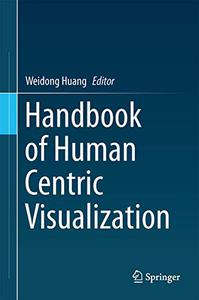
Handbook of Human Centric Visualization by Weidong Huang
English | PDF | 2014 | 741 Pages | ISBN : 1461474841 | 15.8 MB
Visualizations are visual representations of non-visual data. They are produced for people to interact with and to make sense of the underlying data. Rapid advances in display technology and computer power have enabled researchers to produce visually appealing pictures. However, the effectiveness of those pictures in conveying the embedded information to end users has not been fully explored. Handbook of Human Centric Visualization addresses issues related to design, evaluation and application of visualizations. Topics include visualization theories, design principles, evaluation methods and metrics, human factors, interaction methods and case studies.
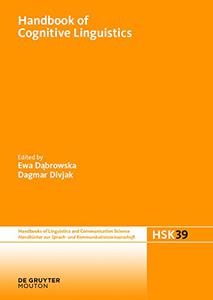
Ewa Dabrowska, Dagmar Divjak, "Handbook of Cognitive Linguistics"
English | 2015 | pages: 725 | ISBN: 3110291843 | PDF | 5,6 mb
Cognitive Linguistics is an approach to language study based on the assumptions that our linguistic abilities are firmly rooted in our cognitive abilities, that meaning is essentially conceptualization, and that grammar is shaped by usage. The Handbook of Cognitive Linguistics provides state-of-the-art overviews of the numerous subfields of cognitive linguistics written by leading international experts which will be useful for established researchers and novices alike. It is an interdisciplinary project with contributions from linguists, psycholinguists, psychologists, and computer scientists which will emphasise the most recent developments in the field, in particular, the shift towards more empirically-based research. In this way, it will, we hope, help to shape the field, encouraging methodologically more rigorous research which incorporates insights from all the cognitive sciences.
Editor Ewa Dabrowska was awarded the Alexander von Humboldt Professorship 2018.
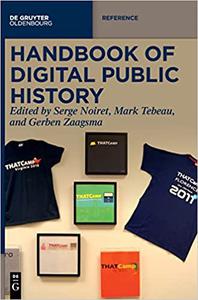
Mark Tebeau, "Handbook Digital Public History "
English | ISBN: 3110439220 | 2022 | 553 pages | PDF | 10 MB
This handbook provides a systematic overview of the present state of international research in digital public history. Individual studies by internationally renowned public historians, digital humanists, and digital historians elucidate central issues in the field and present a critical account of the major public history accomplishments, research activities, and practices with the public and of their digital context. The handbook applies an international and comparative approach, looks at the historical development of the field, focuses on technical background and the use of specific digital media and tools. Furthermore, the handbook analyzes connections with local communities and different publics worldwide when engaging in digital activities with the past, indicating directions for future research, and teaching activities.

Guided Tarot for Teens: A Beginner's Guide to Card Meanings, Spreads, and Trust in Your Intuition by Stefanie Caponi
English | August 23rd, 2022 | ISBN: 0593435958 | 240 pages | True EPUB | 136.56 MB
Adapted from the Amazon best-seller Guided Tarot with over 2400 reviews, this essential guide is a must-have for teens ready to embrace the wisdom of their inner voice through understanding tarot cards.

Parimal Phadke, "Guide to Bharatanatyam Theory : Prarambhik to Praveshika Purna"
English | 2018 | ASIN: B07JGT9C2L | EPUB | pages: 52 | 0.1 mb
This book aims at all the young students of Bharatanatyam who are preparing for theory exams of Bhartanatyam. It has basic concepts explained in the most reader friendly language. Definitions of terms and terminologies have been explained in brief for the understanding of the young reader. From basic concepts of Tala , laya etc. to brief introduction to all the styles of classical dance of India , it also covers some important topics of hasta-s , viniyoga-s etc. , which are relevant topics for the first three exams of Bharatanatyam .
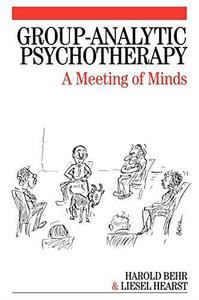
Group-Analytic Psychotherapy: A Meeting of Minds By Harold Behr, Liesel Hearst(auth.)
2005 | 312 Pages | ISBN: 1861564759 | PDF | 6 MB
This book offers practitioners, teachers and students of psychotherapy a detailed and comprehensive account of group analysis. It demystifies the workings of analytic groups and looks at the great stretch of issues and tasks confronting the therapist in the practice of group analytic psychotherapy. Each stage in the process is fully discussed: the assessment and preparation of patients for groups, dynamic administration, beginning and ending a group, and the introduction of new members into an established group. A chapter on psychopathology gives a picture of the main psychiatric conditions which the group therapist is likely to encounter, and offers clear guidelines on how to manage them in a group context. An exposition on the group in full flow provides an unusual insight into the processes which constitute the analytic culture, including the analysis of dreams, the art of interpreting, use of the transference and countertransference, and the place of play, humour and metaphor. Difficult and challenging scenarios, such as dropping out, scapegoating, the silent group member, and monopolisation of the group are treated in depth, as are Large Groups, homogeneous groups, groups for children and adolescents, family therapy, groups in non-clinical settings, and the supervision of group therapy. The impingement of the therapist' s own personal issues is also given attention. The authors have flanked their narrative with accounts of the historical, social and cultural origins of group analysis, and a vision of the future provided by the newer strands of thinking in the field. The text is enlivened by colourful vignettes drawn from the authors' own experiences, and by sharply focused dialogues between the two authors, designed to illustrate their contrasting and complementary perspectives. The book represents a distillation of the authors' long experience in the field of group analytic practice and training in the United Kingdom and internationally.Content: Chapter 1 The Social and Cultural Basis of Group Analysis (pages 1-11): Chapter 2 A Century of Group Therapy (pages 12-27): Chapter 3 Planning an Analytic Group (pages 28-41): Chapter 4 Dynamic Administration (pages 42-54): Chapter 5 The Assessment Interview (pages 55-65): Chapter 6 The Symptom in its Group Context (pages 66-80): Chapter 7 The Start of a New Group (pages 81-91): Chapter 8 A Newcomer to the Group (pages 92-101): Chapter 9 The Group in Action (pages 102-120): Chapter 10 Life Events in the Group (pages 121-132): Chapter 11 Bringing Therapy to an End (pages 133-143): Chapter 12 Therapeutic Pitfalls (pages 144-149): Chapter 13 Challenging Scenarios (pages 150-163): Chapter 14 The Group Analyst in Trouble (pages 164-174): Chapter 15 The Large Group (pages 175-188): Chapter 16 All in the Same Boat: The Value of Homogeneous Groups (pages 189-202): Chapter 17 Groups for Children and Adolescents (pages 203-219): Chapter 18 Family Therapy: A Group?Analytic Perspective (pages 220-230): Chapter 19 The Application of Group Analysis to Non?Clinical Settings (pages 231-236): Chapter 20 The Supervision of Group Therapy (pages 237-246): Chapter 21 The Group Analyst as a Professional (pages 247-254): Chapter 22 The Changing Landscape of Group Analysis (pages 255-268):
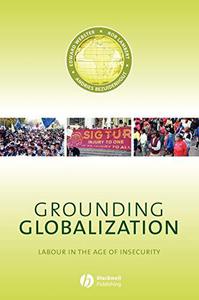
Grounding Globalization: Labour in the Age of Insecurity By Edward Webster, Rob Lambert, Andries Bezuidenhout(auth.), Noel Castree(eds.)
2008 | 275 Pages | ISBN: 140512914X | PDF | 4 MB
*Winner of the 2009 Distinguished Scholarly Monograph Prize, awarded by the American Sociological Association Labor and Labor Movements section* Claims have been made on the emergence of a new labour internationalism in response to the growing insecurity created by globalization. However, when persons face conditions of insecurity they often turn inwards. The book contains a warning and a sign of hope. Some workers become fatalistic, even xenophobic. Others are attempting to globalize their own struggles. Examines the claim that a new labour internationalism is emerging by grounding the book in evidence, rather than assertion Analyzes three distinct places - Orange, Australia; Changwon, South Korea; and Ezakheni, South Africa - and how they dealt with manufacturing plants undergoing restructuring Explores worker responses to rising levels of insecurity and examines preconditions for the emergence of counter-movements to such insecurities Highlights the significance of 'place' and 'scale', and demonstrates how the restructuring of multi-national corporations, and worker responses to this, connect the two concepts Content: Chapter 1 The Polanyi Problem and the Problem with Polanyi (pages 1-21): Chapter 2 Manufacturing Matters (pages 27-50): Chapter 3 The Return of Market Despotism (pages 51-77): Chapter 4 Citizenship Matters (pages 78-103): Chapter 5 Strong Winds in Ezakheni (pages 109-126): Chapter 6 Escaping Social Death in Changwon (pages 127-140): Chapter 7 Squeezing Orange (pages 141-156): Chapter 8 History Matters (pages 161-185): Chapter 9 Grounding Labour Internationalism (pages 186-211): Chapter 10 The Necessity for Utopian Thinking (pages 212-227):
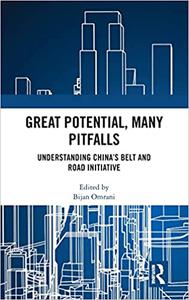
Bijan Omrani, "Great Potential, Many Pitfalls: Understanding China's Belt and Road Initiative"
English | ISBN: 0367516578 | 2021 | 108 pages | EPUB | 1219 KB
China's Belt and Road Initiative (BRI), China's globe-girdling infrastructure and trade corridor project, is a rare watershed in international affairs. It affects, whether directly or indirectly, nearly the entire world, directly involving more than 60 countries, nearly 4.5 billion people (about two-thirds of the world's population), up to $8 trillion, and around 40 per cent of the global economy.


